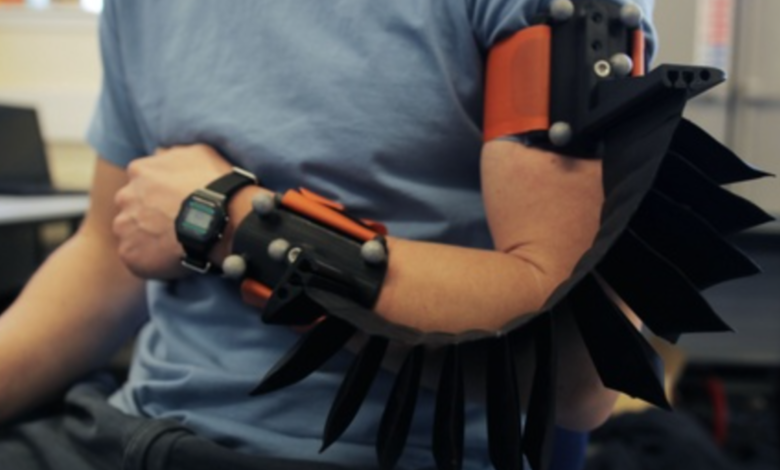Aberdeen’s soft robotic arm could help people recovering from stroke

Researchers at the University of Aberdeen have developed a new soft ‘robotic arm’ that can give a boost to people recovering from stroke.
The device has been built by James Greig, a final year PhD researcher at the university.
As per Greig, the robotic arm could allow patients to carry out invaluable physiotherapy at home in addition to existing assisted physio sessions.
The PhD researcher saw the lack of options for physiotherapy access and, therefore, identified a need to develop a technology which can be used safely at home.
“What we’re trying to address is a product to address the lack of availability to physiotherapy for stroke patients who have maybe suffered some loss of mobility in the arm,” Greig says.
The robotic arm in question
The robotic arm is a lightweight equipment that uses flexible, inflatable material to support the arm as it makes basic repetitive movements – which are “essential for rehabilitation following a stroke.”
The other key benefit of the device is that it is cheap, and can be made readily available in the community. Also, anyone in need can use the device without the help of a specialist, making it easy to use.
Post-stroke rehabilitation is dependent on the mobilization of the limb. High spasticity can be ensured if efforts for limb mobility are made from an early stage.
The robotic device is worn on the arm, held on with straps and works by pumping air from a small compressor into a series of strips of material which inflate, press against each other and encourage movement in the limb – akin to a bicep curl, according to a press release.
While initially made to help recovering stroke patients, the device can be used by anyone undergoing physiotherapy on this specific movement of the arm.
Soft robotics at play
“We’re basically trying to mimic the same movement that physios will encourage in their sessions but using robotics in a way that allows people to do this at home without the physiotherapist actually being there,” Greig said.
These innovations are part of the relatively new soft robotics stream – which differs from the rigid robots which are common in today’s day and age.
The team also approached a group of physiotherapists who gave encouraging feedback for the device in question.
“This is an exciting development in the field of robotic technology, offering the potential to provide an adjunct to rehabilitation therapies such as occupational therapy and physiotherapy and the opportunity to increase intensity through repetition,” said Thérèse Lebedis, Consultant AHP (Occupational Therapist) in Stroke, who has worked with James on the project.
The device is in a development phase before it can go to clinical trials.
ABOUT THE EDITOR
Abhishek Bhardwaj Abhishek brings a wealth of experience in covering diverse stories across different beats. Having contributed to renowned wire agencies and Indian media outlets like ANI and NDTV, he is keenly interested in Tech, Business and Defense coverage.



